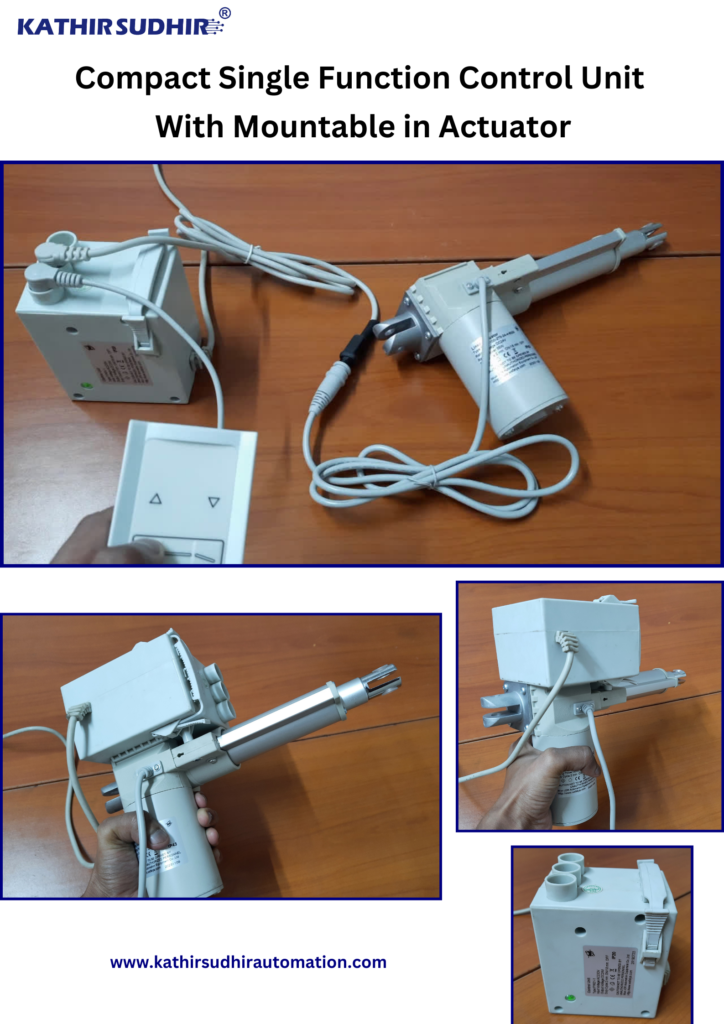Introduction: In the ever-evolving landscape of healthcare, technological advancements play a pivotal role in enhancing patient comfort and care. Hospital electric beds have become an indispensable component in providing optimal patient support and convenience. The latest innovation in this realm comes in the form of compact control units with added electric actuators and remote control capabilities, promising a new era of efficiency and ease in healthcare settings.

The Evolution of Hospital Electric Beds:
Traditional hospital beds have seen a significant transformation over the years, transitioning from manually operated to electrically powered models. These advancements have been driven by the need for increased patient comfort, caregiver efficiency, and overall safety within healthcare facilities. Today, electric beds offer diverse functionalities such as adjustable height, backrest, and leg elevation.
Compact Control Units: A Game-Changer:
The introduction of compact control units marks a paradigm shift in the design and functionality of hospital electric beds. These units are meticulously engineered to be space-saving, user-friendly, and technologically advanced, providing healthcare professionals with a versatile tool to enhance patient care.
Electric Actuator Integration:
One of the standout features of these control units is the integration of electric actuators. Electric actuators replace traditional hydraulic systems, offering precise and silent adjustments to bed positions. This not only ensures a smooth and noise-free operation but also enables caregivers to make minute adjustments tailored to each patient’s unique needs.
Remote Control Accessibility:
The incorporation of remote control technology elevates the user experience for both healthcare professionals and patients. With a simple handheld device, caregivers can remotely adjust bed positions, minimizing physical strain and optimizing workflow efficiency. Patients, on the other hand, gain a newfound sense of independence by having control over their bed adjustments, fostering a more comfortable healing environment.
Key Benefits:
- Enhanced Patient Comfort:
- Electric actuators enable seamless adjustments for superior patient positioning.
- Remote control allows patients to personalize their bed settings for maximum comfort.
- Efficiency for Caregivers:
- Compact design facilitates easy maneuverability in tight spaces.
- Remote control functionality reduces the need for manual adjustments, saving time for healthcare professionals.
- Quiet and Discreet Operation:
- Electric actuators operate silently, creating a tranquil environment for both patients and caregivers.
- Customized Patient Care:
- Precise positioning options cater to a variety of medical needs and conditions.
- Remote control empowers patients to actively participate in their care plans.
Future Implications:
As technology continues to advance, compact control units for hospital electric beds are likely to evolve even further. Integration with smart healthcare systems, data analytics, and additional safety features may be on the horizon, promising a future where patient care is not only efficient but also highly personalized.
Conclusion:
Compact control units with electric actuators and remote control capabilities represent a significant leap forward in the realm of hospital electric beds. These innovations not only enhance patient comfort but also streamline caregiving processes, marking a positive step toward a more technologically advanced and patient-centric healthcare environment. As the healthcare industry embraces these advancements, the future holds the promise of even greater improvements in patient care and overall operational efficiency.
